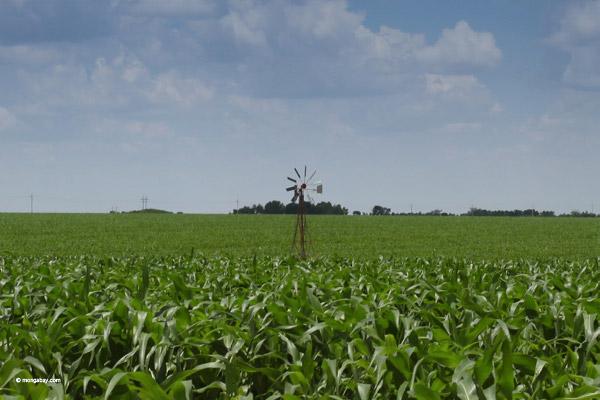When I was a teenager, a friend and I cruised across the United States touring our national parks. What I remember most from that 1977 trip is rolling over vast, wild, unspoiled miles, heading toward the Grand Canyon, Yosemite, and Zion.
Three years later, I visited Great Smoky Mountains National Park with my fiancée. What I recall from that trip is Gatlinburg, the park’s garish gateway with its Ripley’s Believe It or Not Odditorium, Elvis Presley Hall of Fame, Hillbilly Village, and other weird attractions vying for the attention of corndog and cotton candy-eating visitors.
Gatlinburg became a tourist eyesore by accident—born out of random uncontrolled development. A more serious accident is now occurring in the great open spaces downwind and downstream of such natural wonders as Grand Tetons National Park, Glacier National Park, and the Delaware Water Gap National Recreation Area.
The threat is fracking. A booming and unregulated energy industry is quietly but quickly encroaching on some of our most cherished national parks with gas and oil drilling fields.
“From Glacier National Park’s eastern boundary, visitors can throw a stone and hit any of 16 exploratory wells and their associated holding tanks, pump jacks, and machinery,” says a just released report by the National Parks Conservation Association Center for Park Research. “Visitors heading east from Glacier National Park encounter road signs urging caution against the poisonous gases that fracking operations emit.”
Theodore Roosevelt National Park, a lesser-known preserve in the North Dakota Badlands, once offered stargazers some of the nation’s darkest most pristine night skies. Now, fracking fields just outside the park create a scene right out of the science fiction movie Blade Runner, with gas flares spewing flames high into the sky and huge trucks roaring by. Ironically, a proposed bridge and road to service a newly planned fracking field will soon dominate the view from the park’s Elkhorn Ranch, where President Theodore Roosevelt first conceived his influential conservation ideas.
Of today’s 401 national park units, 131 lie either directly above or fewer than 25 surface miles from major underground oil and gas deposits. More than 33 percent of America’s national parks could be impacted by fracking.
The number of fracked wells encroaching on national parks is currently still small, but about to skyrocket. In 2010, for example, there were 1,000 frack well pads in Pennsylvania’s Marcellus shale region west of Delaware Water Gap National Recreation Area. That number is projected to rise to as many as 15,000 well pads in twenty years.
Fracking doesn’t belong near our national parks. Hundred-foot tall derricks dominate the drilling fields. Each well consumes acres of land for its concrete well pad, plus more land for roaring, air-polluting compressor stations; wastewater tanks and pits; miles of potentially leaky pipeline; and new roads that require thousands of truck trips to transport the millions of gallons of freshwater needed to frack a well, and to haul away toxic wastewater containing volatile organic compounds like benzene, toluene and xylene.
Add to this a witches brew of air pollution—fumes burned off of wells or that rise from wastewater pits that can contain carbon disulfide and carbonyl sulfide (smelling like rotten eggs); the neurotoxins methyl pyridine and dimethyl pyridine; and lung-damaging ozone.
Fracking isn’t just a toxic eyesore. Its infrastructure is bad for local business, and already putting pressure on people who earn a living through tourism, hunting and fishing. Outfitters near national parks complain that they can’t take hunters back to prime hunting areas because elk and deer have been driven off by drilling. The Theodore Roosevelt Conservation Partnership notes on its website that “increases in energy development… are threatening public-lands hunting and fishing opportunities across the country.”
Fracking needs to be managed responsibly. There’s no reason we can’t increase domestic energy production while also protecting our nation’s most inspiring natural wonders. Protection may not even require an act of Congress. All that is likely needed is conscientious oversight by the Department of the Interior and the Obama administration.
Blue Ridge Press senior editor Glenn Scherer lives in Hardwick, Vermont. ©Blue Ridge Press 2013.




